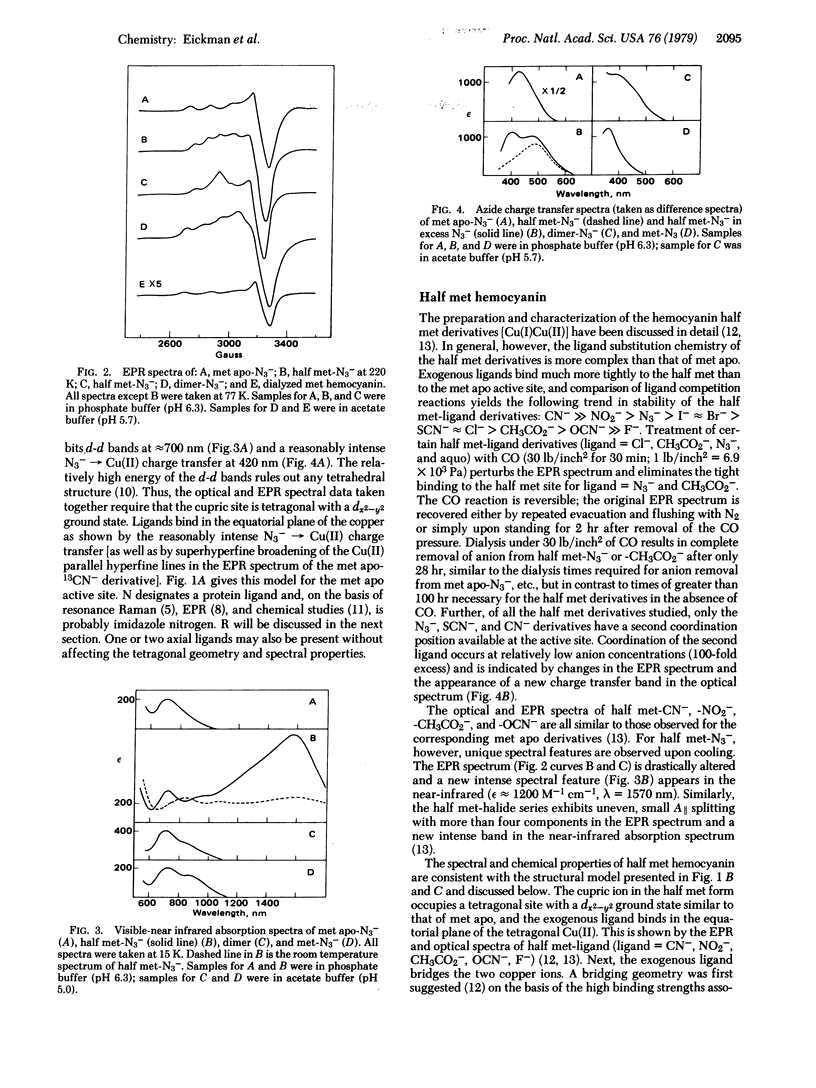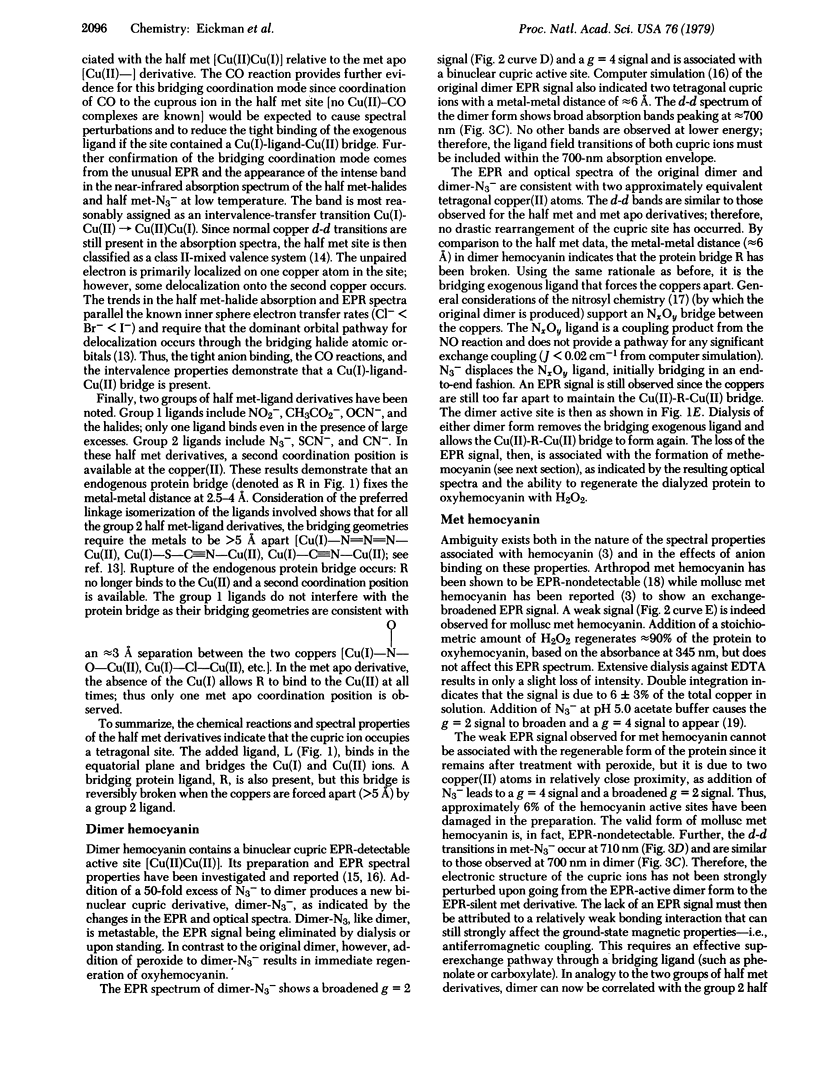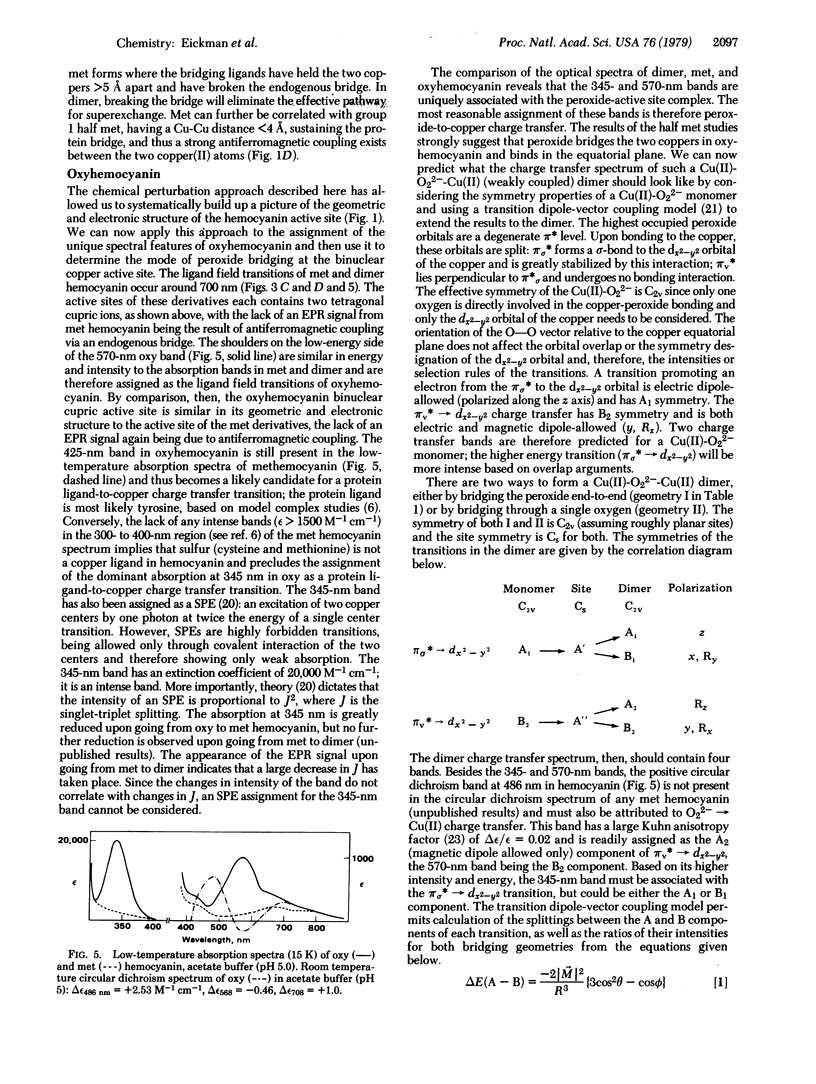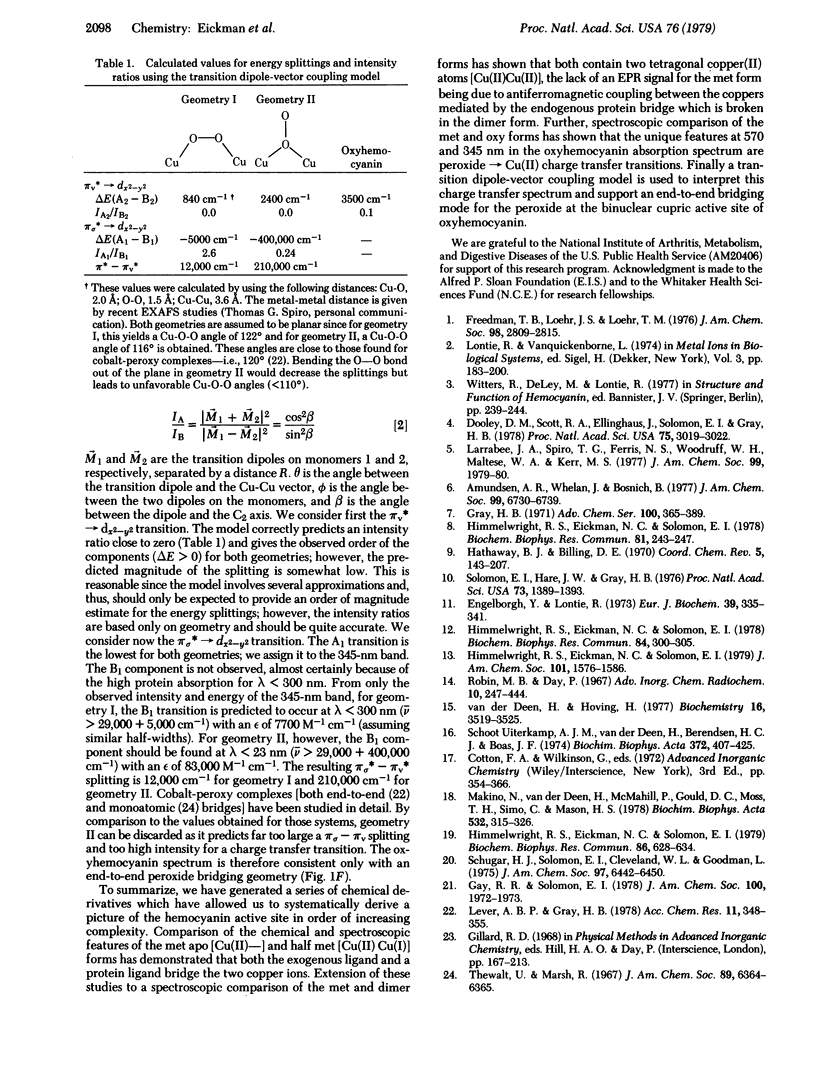Abstract
The chemical and spectral properties of a series of hemocyanin derivatives were systematically compared to provide insight into the geometric and electronic structure of the oxyhemocyanin active site. The binuclear copper site is characterized as two tetragonal Cu(II) atoms bridged by both an endogenous protein ligand and the exogenous ligand (i.e., peroxide), with the lack of an electron paramagnetic resonance signal being the result of antiferromagnetic exchange via the endogenous bridge. A transition dipole-vector coupling model is used to assign the unique absorption spectral properties of oxyhemocyanin: the bands at 570 and 486 nm are assigned as components of the peroxide pi v* to copper dx2-y2 charge transfer. The 345-nm band is one component of the pi sigma* leads to dx2-y2 charge transfer. The model also predicts an end-to-end bridging geometry for the peroxide in oxyhemocyanin.
Full text
PDF




Selected References
These references are in PubMed. This may not be the complete list of references from this article.
- Amundsen A. R., Whelan J., Bosnich B. Biological analogues. On the nature of the binding sites of copper-containing proteins. J Am Chem Soc. 1977 Sep 28;99(20):6730–6739. doi: 10.1021/ja00462a042. [DOI] [PubMed] [Google Scholar]
- Dooley D. M., Scott R. A., Ellinghaus J., Solomon E. I., Gray H. B. Magnetic susceptibility studies of laccase and oxyhemocyanin. Proc Natl Acad Sci U S A. 1978 Jul;75(7):3019–3022. doi: 10.1073/pnas.75.7.3019. [DOI] [PMC free article] [PubMed] [Google Scholar]
- Engelborghs Y., Lontie R. Ethoxyformylation of Helix pomatia haemocyanin. Eur J Biochem. 1973 Nov 15;39(2):335–341. doi: 10.1111/j.1432-1033.1973.tb03131.x. [DOI] [PubMed] [Google Scholar]
- Freedman T. B., Loehr J. S., Loehr T. M. A resonance Raman study of the copper protein, hemocyanin. New evidence for the structure of the oxygen-binding site. J Am Chem Soc. 1976 May 12;98(10):2809–2815. doi: 10.1021/ja00426a023. [DOI] [PubMed] [Google Scholar]
- Himmelwright R. S., Eichman N. C., Solomon E. I. Preparation and characterization of met apo hemocyanin: a single copper (II) active site. Biochem Biophys Res Commun. 1978 Mar 15;81(1):243–247. doi: 10.1016/0006-291x(78)91656-x. [DOI] [PubMed] [Google Scholar]
- Himmelwright R. S., Eickman N. C., Solomon E. I. Chemical and spectroscopic conformation of an exogenous ligand bridge in half met hemocyanin. Biochem Biophys Res Commun. 1978 Sep 29;84(2):300–305. doi: 10.1016/0006-291x(78)90170-5. [DOI] [PubMed] [Google Scholar]
- Himmelwright R. S., Eickman N. C., Solomon E. I. Reactions and interconversion of met and dimer hemocyanin. Biochem Biophys Res Commun. 1979 Feb 14;86(3):628–634. doi: 10.1016/0006-291x(79)91759-5. [DOI] [PubMed] [Google Scholar]
- Larrabee J. A., Spiro T. G., Ferris N. S., Woodruff W. H., Maltese W. A., Kerr M. S. Resonance raman study of mollusc and arthropod hemocyanins using ultraviolet excitation: copper environment and subunit inhomogeneity. J Am Chem Soc. 1977 Mar 16;99(6):1979–1980. doi: 10.1021/ja00448a053. [DOI] [PubMed] [Google Scholar]
- Makino N., van der Deen H., McMahill P., Gould D. C., Moss T. H., Simo C., Mason H. S. The binuclear cupric cluster of Cancer magister methemocyanin. Biochim Biophys Acta. 1978 Feb 15;532(2):315–326. doi: 10.1016/0005-2795(78)90586-x. [DOI] [PubMed] [Google Scholar]
- Solomon E. I., Hare J. W., Gray H. B. Spectroscopic studies and a structural model for blue copper centers in proteins. Proc Natl Acad Sci U S A. 1976 May;73(5):1389–1393. doi: 10.1073/pnas.73.5.1389. [DOI] [PMC free article] [PubMed] [Google Scholar]
- van der Deen H., Hoving H. Nitrite and nitric oxide treatment of Helix pomatia hemocyanin: single and double oxidation of the active site. Biochemistry. 1977 Aug 9;16(16):3519–3525. doi: 10.1021/bi00635a004. [DOI] [PubMed] [Google Scholar]


